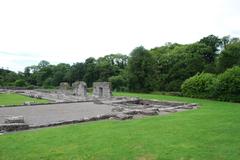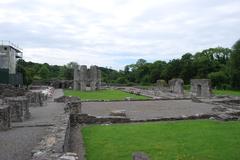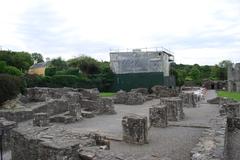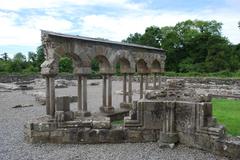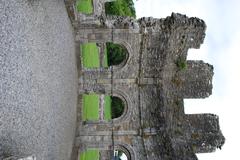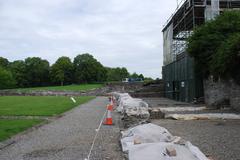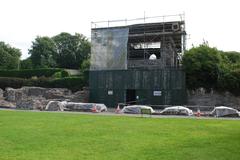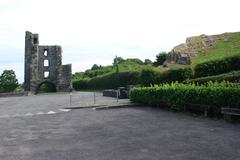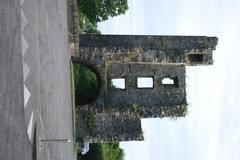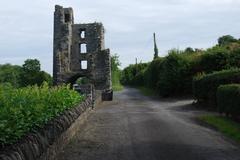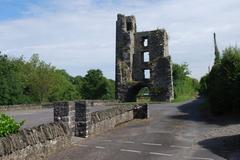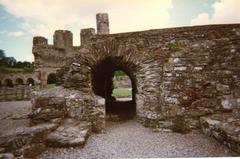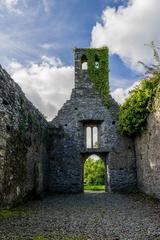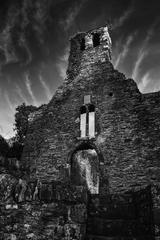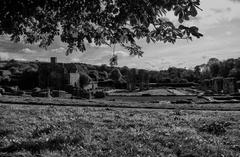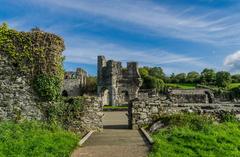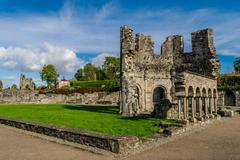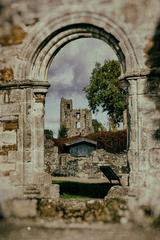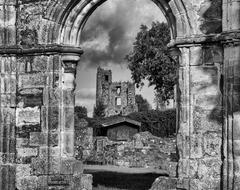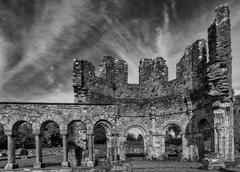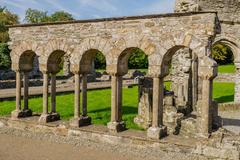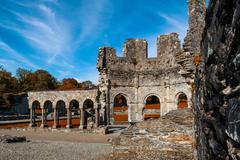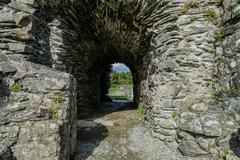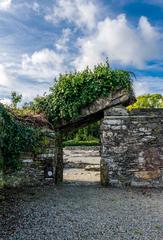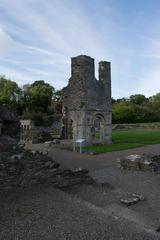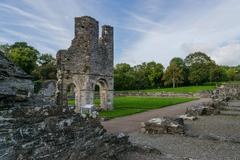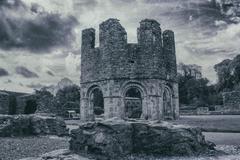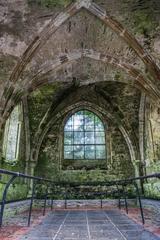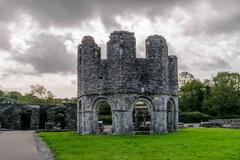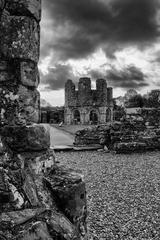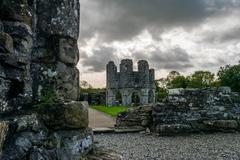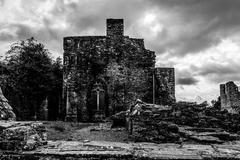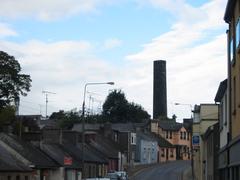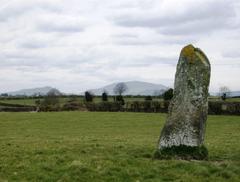
Visiting Mellifont Abbey: History, Tips, and Attractions in Drumcondra, Ireland
Publication Date: 19/07/2024
Introduction to Mellifont Abbey
Nestled in the scenic landscapes of Drumcondra, Ireland, Mellifont Abbey stands as a significant monument to the country’s rich ecclesiastical heritage. Established in 1142 by St. Malachy of Armagh, Mellifont Abbey holds the distinction of being the first Cistercian monastery in Ireland. Its foundation marked the introduction of the Cistercian order to the country, thereby influencing both religious practices and agricultural advancements during the medieval period. The abbey’s name, derived from the Latin ‘Mellifons,’ meaning ‘Fountain of Honey,’ reflects the Cistercian emphasis on self-sufficiency and agricultural productivity (Heritage Ireland).
Throughout its existence, Mellifont Abbey has been a beacon of spiritual, cultural, and architectural significance, shaping the religious landscape of Ireland. From its Romanesque architectural features to its role in the agricultural and economic development of the region, Mellifont Abbey offers a fascinating glimpse into medieval monastic life (National Monuments Service). This comprehensive guide will delve into the rich history of Mellifont Abbey, provide essential visitor information, and explore nearby attractions, offering a well-rounded understanding of this remarkable site.
Contents Overview
- Introduction
- History of Mellifont Abbey
- Foundation and Early Years
- Architectural Significance
- Expansion and Influence
- Decline and Dissolution
- Post-Dissolution Era
- Archaeological Discoveries
- Visitor Information
- Visiting Hours
- Ticket Prices
- Guided Tours
- Accessibility
- Nearby Attractions
- Conclusion
- FAQ
History of Mellifont Abbey
Foundation and Early Years
Mellifont Abbey, located in Drumcondra, Ireland, was founded in 1142 by St. Malachy of Armagh. This establishment marked the introduction of the Cistercian order to Ireland, a significant milestone in the country’s ecclesiastical history. The abbey was named “Mellifont,” derived from the Latin “Mellifons,” meaning “Fountain of Honey,” reflecting the Cistercian emphasis on self-sufficiency and agricultural productivity (Heritage Ireland).
Architectural Significance
Mellifont Abbey’s architecture set a precedent for subsequent Cistercian establishments in Ireland. Influenced by the Burgundian style, its design was characterized by simplicity and austerity, a departure from the more ornate Romanesque architecture prevalent at the time. Key features included a cruciform church, a cloister, chapter house, dormitory, and refectory. The octagonal lavabo, used by monks for ritual washing, is one of the most distinctive remnants of the abbey (National Monuments Service).
Expansion and Influence
During the 12th and 13th centuries, Mellifont Abbey flourished, becoming a model for other Cistercian monasteries in Ireland. By the mid-13th century, the abbey had established daughter houses, including Bective Abbey in County Meath and Boyle Abbey in County Roscommon. Mellifont’s influence extended beyond religious practices; it played a crucial role in the agricultural and economic development of the region, introducing advanced farming techniques and contributing to local trade (Irish Monasticism).
Decline and Dissolution
The abbey’s prosperity began to wane in the late 14th century due to a combination of internal strife, economic difficulties, and external pressures. The Black Death significantly reduced the monastic population, and challenges from local Gaelic lords and the encroaching Anglo-Norman influence further strained the abbey.
The final blow came in the 16th century with the Dissolution of the Monasteries under King Henry VIII. In 1539, Mellifont Abbey was officially dissolved, and its lands and properties were confiscated by the Crown. The abbey’s buildings were subsequently granted to Sir Edward Moore, who converted part of the site into a fortified residence (History Ireland).
Post-Dissolution Era
Following its dissolution, Mellifont Abbey fell into disrepair. However, the site remained historically significant. During the Williamite War in Ireland, the abbey’s ruins were used as a military encampment by William of Orange’s forces before the Battle of the Boyne in 1690. This event further cemented Mellifont’s place in Irish history (Battle of the Boyne Visitor Centre).
Archaeological Discoveries
Archaeological excavations at Mellifont Abbey have provided valuable insights into its history and the daily lives of its inhabitants. Excavations in the 20th century uncovered the foundations of the original church, cloister, and other monastic buildings. Artifacts such as pottery, tools, and religious items have been found, shedding light on the material culture of the Cistercian monks. One of the most significant discoveries was the abbey’s lavabo, a unique octagonal structure used for ritual washing (Excavations.ie).
Visitor Information
Visiting Hours
Mellifont Abbey is open to visitors year-round, with varying hours depending on the season. It is recommended to check the official Heritage Ireland website for the most up-to-date visiting hours.
Ticket Prices
Entrance fees to Mellifont Abbey are affordable. Ticket prices vary for adults, seniors, and children, with family packages available. For detailed pricing information, refer to the Heritage Ireland website.
Guided Tours
Guided tours are available for those who wish to gain a deeper understanding of Mellifont Abbey’s history and significance. These tours are led by knowledgeable guides who provide insights into the site’s architectural features and historical context. Booking in advance is recommended.
Accessibility
Mellifont Abbey is committed to being accessible to all visitors. Pathways are designed to accommodate wheelchairs and strollers, and there are informational plaques available throughout the site. Visitors with specific accessibility needs are encouraged to contact the site in advance for tailored assistance.
Nearby Attractions
While visiting Mellifont Abbey, consider exploring other historical sites in the Drogheda area. Highlights include the Battle of the Boyne Visitor Centre, the High Cross at Monasterboice, and the ancient town of Drogheda, which offers a rich tapestry of medieval history and culture.
Conclusion
While Mellifont Abbey no longer functions as a monastic community, its ruins stand as a testament to its historical significance. From its foundation in the 12th century to its dissolution in the 16th century and beyond, Mellifont Abbey has played a crucial role in Ireland’s ecclesiastical, architectural, and cultural history. The ongoing preservation efforts ensure that future generations can continue to explore and appreciate this remarkable site. Plan your visit today to experience the rich history and serene beauty of Mellifont Abbey.
FAQ
What are the visiting hours for Mellifont Abbey?
Mellifont Abbey is open year-round, but hours vary by season. Check the official website for current visiting hours.
How much do tickets to Mellifont Abbey cost?
Ticket prices vary for adults, seniors, and children, with family packages available. For the latest pricing, visit the Heritage Ireland website.
Are guided tours available at Mellifont Abbey?
Yes, guided tours are available and highly recommended for those interested in a deeper understanding of the abbey’s history and architecture.
Is Mellifont Abbey accessible to visitors with disabilities?
Yes, the site is designed to be accessible to all visitors, with pathways suitable for wheelchairs and strollers. Contact the site in advance for specific accessibility needs.
Citations and Sources
- Visiting Mellifont Abbey - History, Tickets, and Tips. Heritage Ireland. Retrieved from Heritage Ireland
- Explore Mellifont Abbey - Visiting Hours, Tickets, and Historical Significance. National Monuments Service. Retrieved from National Monuments Service
- History Ireland. Medieval History Pre-1500 Mellifont Abbey. Retrieved from History Ireland
- Battle of the Boyne Visitor Centre. Retrieved from Battle of the Boyne Visitor Centre

